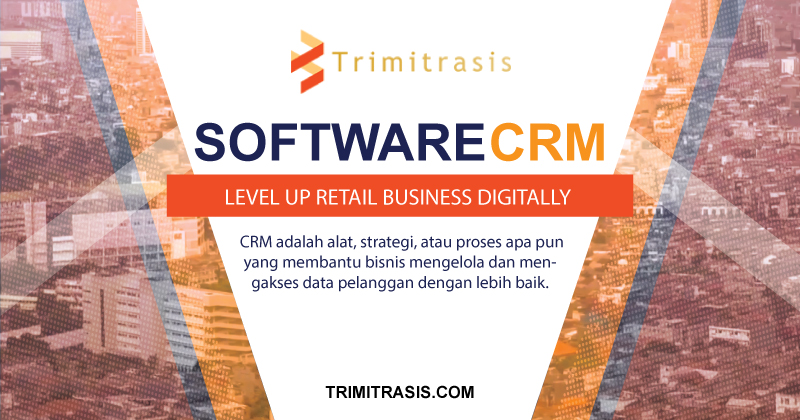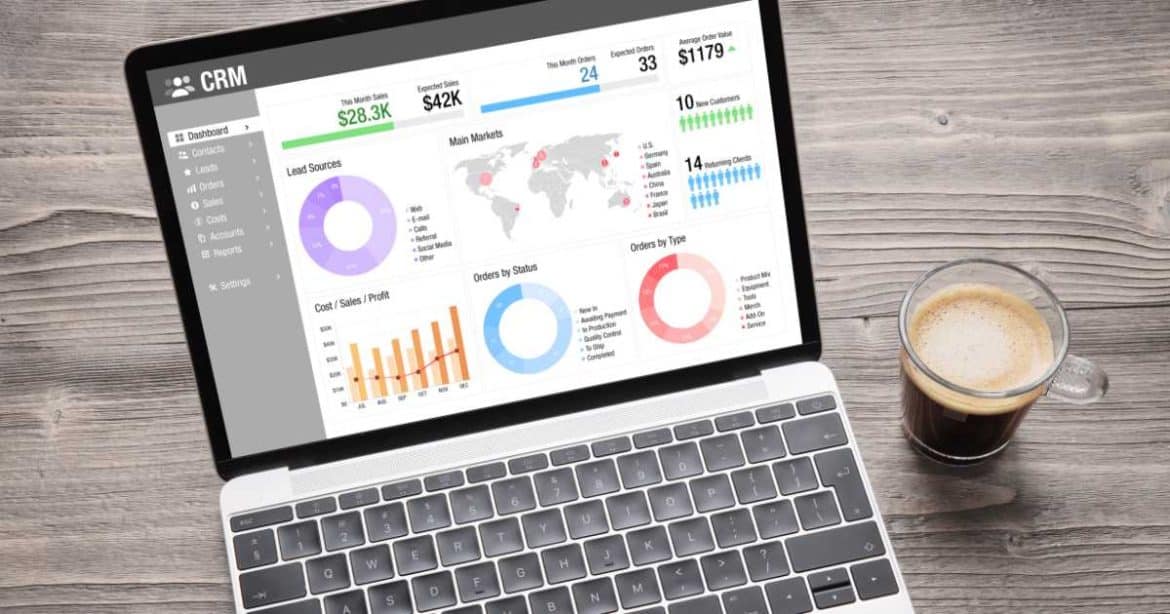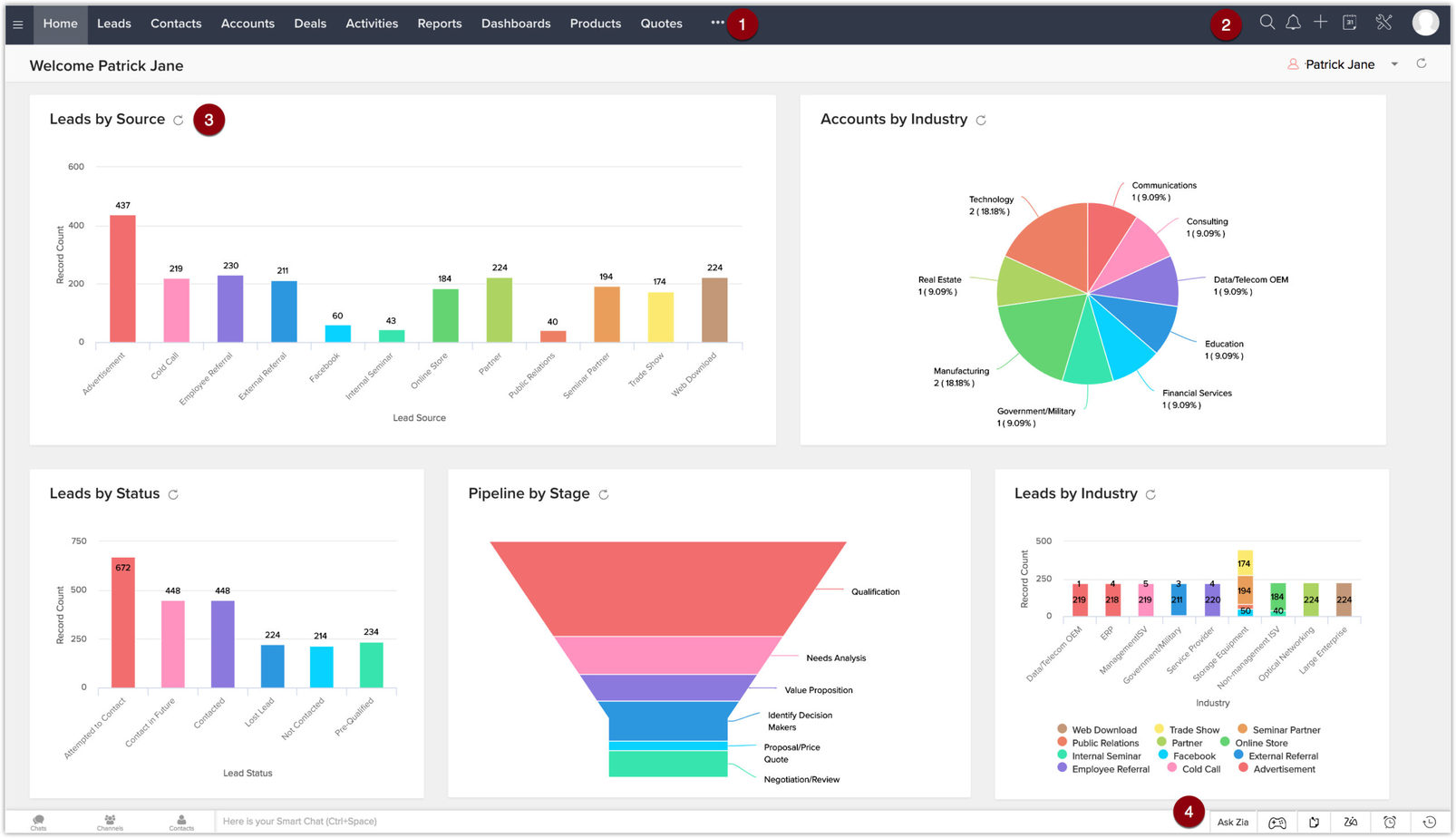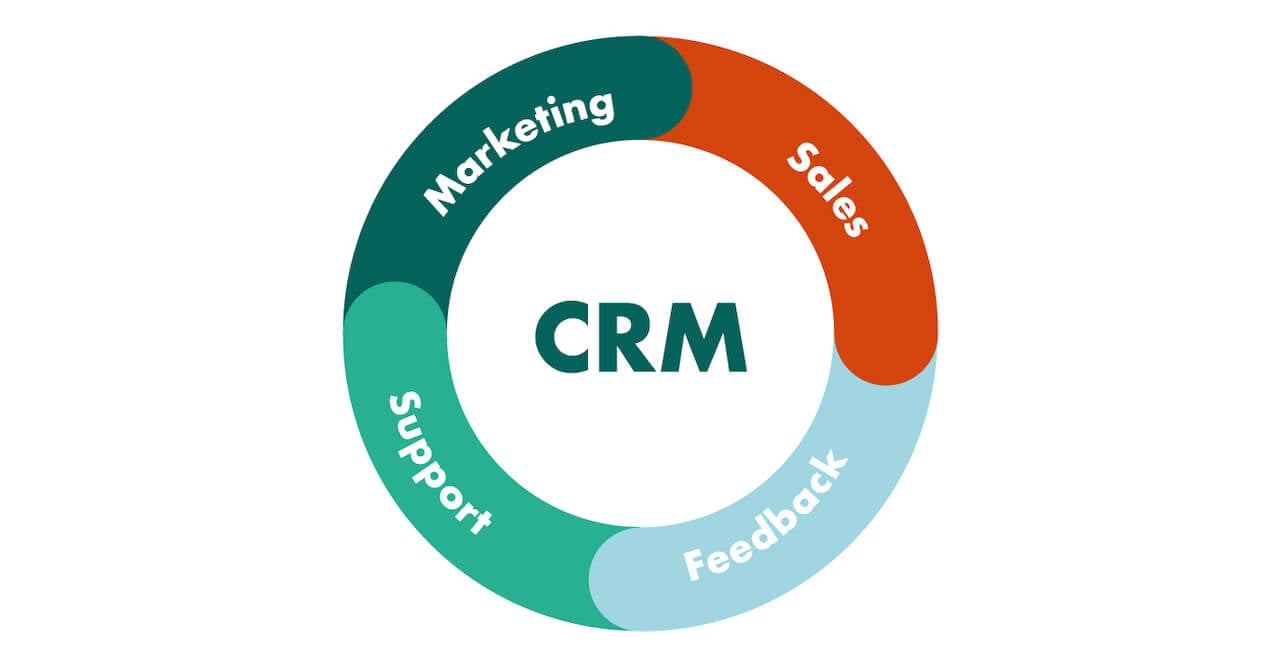
Unlocking CRM Marketing ROI: A Comprehensive Guide to Maximizing Your Returns
In today’s hyper-competitive business landscape, understanding and optimizing your marketing return on investment (ROI) is not just beneficial; it’s absolutely critical for survival and sustained growth. And when it comes to marketing, Customer Relationship Management (CRM) systems have emerged as powerful tools, capable of transforming how businesses interact with their customers. But simply implementing a CRM isn’t enough. To truly reap the rewards, you need a strategic approach focused on maximizing your CRM marketing ROI. This comprehensive guide dives deep into the intricacies of CRM marketing ROI, providing you with the knowledge and actionable insights you need to achieve exceptional results.
What is CRM Marketing ROI?
At its core, CRM marketing ROI is a financial metric that measures the profitability of your CRM marketing efforts. It quantifies the return you receive on the investment you make in your CRM system, associated marketing activities, and related resources. Understanding your CRM marketing ROI allows you to:
- Assess the effectiveness of your CRM marketing strategies.
- Identify areas for improvement and optimization.
- Justify your CRM investments to stakeholders.
- Make data-driven decisions to allocate resources effectively.
Calculating CRM marketing ROI involves comparing the revenue generated from your CRM-driven marketing campaigns to the total cost of those campaigns. The higher the ROI, the more profitable your CRM marketing efforts are.
Key Components of CRM Marketing ROI
To accurately calculate and improve your CRM marketing ROI, you need to consider several key components:
1. Investment Costs
This encompasses all the costs associated with your CRM system and related marketing activities. These include:
- CRM Software Costs: Subscription fees, licensing costs, and any implementation fees.
- Implementation Costs: Costs associated with setting up and configuring your CRM system, including data migration, customization, and integration with other systems.
- Marketing Campaign Costs: The expenses of running your marketing campaigns, such as email marketing software, advertising costs (e.g., Google Ads, social media ads), content creation, and design.
- Personnel Costs: Salaries and wages of your marketing team, CRM administrators, and any other staff involved in CRM-related activities.
- Training Costs: Expenses related to training your team on how to use the CRM system and execute marketing campaigns effectively.
- Maintenance Costs: Ongoing costs for software updates, technical support, and system maintenance.
2. Revenue Generated
This represents the revenue directly attributable to your CRM marketing efforts. It’s crucial to accurately track and attribute revenue to specific campaigns and activities. This includes:
- Sales Revenue: Revenue generated from sales leads nurtured through your CRM system.
- Upselling and Cross-selling Revenue: Revenue generated from selling additional products or services to existing customers through CRM-driven campaigns.
- Customer Retention Revenue: Revenue generated from retaining customers and preventing churn through personalized CRM interactions.
- Lead Generation Revenue: Revenue generated from leads acquired through CRM-powered marketing campaigns.
3. Metrics and KPIs
Tracking the right metrics and Key Performance Indicators (KPIs) is essential for measuring the success of your CRM marketing efforts. Some important metrics to consider include:
- Customer Acquisition Cost (CAC): The cost of acquiring a new customer.
- Customer Lifetime Value (CLTV): The predicted revenue a customer will generate over their relationship with your business.
- Conversion Rates: The percentage of leads that convert into customers.
- Click-Through Rates (CTR): The percentage of people who click on links in your marketing emails or ads.
- Open Rates: The percentage of people who open your marketing emails.
- Churn Rate: The percentage of customers who stop doing business with you.
- Return on Ad Spend (ROAS): Revenue generated for every dollar spent on advertising.
Calculating CRM Marketing ROI: The Formula
The basic formula for calculating CRM marketing ROI is:
CRM Marketing ROI = ((Revenue Generated – Total Investment Costs) / Total Investment Costs) * 100
For example, if your CRM marketing efforts generated $100,000 in revenue and cost $20,000, your ROI would be:
ROI = (($100,000 – $20,000) / $20,000) * 100 = 400%
This means that for every dollar you invested, you generated $4 in return.
Strategies to Improve Your CRM Marketing ROI
Improving your CRM marketing ROI requires a strategic, data-driven approach. Here are some effective strategies to consider:
1. Data Quality and Management
The foundation of any successful CRM strategy is high-quality data. Ensure your CRM data is accurate, complete, and up-to-date. This involves:
- Data Cleansing: Regularly clean your data to remove duplicates, correct errors, and standardize formatting.
- Data Enrichment: Supplement your existing data with additional information to gain a more complete understanding of your customers.
- Data Segmentation: Segment your customer base into meaningful groups based on demographics, behavior, and other relevant criteria.
- Data Governance: Establish clear data governance policies and procedures to ensure data quality and compliance.
2. Targeted Marketing Campaigns
Leverage your CRM data to create highly targeted marketing campaigns that resonate with specific customer segments. This includes:
- Personalization: Tailor your marketing messages and offers to individual customer preferences and behaviors.
- Segmentation: Create targeted campaigns for different customer segments based on their needs and interests.
- Behavioral Targeting: Trigger marketing campaigns based on customer actions, such as website visits, product purchases, or email opens.
- Lifecycle Marketing: Nurture leads and customers throughout their entire lifecycle, from initial awareness to post-purchase support.
3. Automation and Efficiency
Automate repetitive tasks to free up your marketing team’s time and improve efficiency. This can include:
- Automated Email Marketing: Set up automated email sequences for lead nurturing, welcome emails, and abandoned cart recovery.
- Workflow Automation: Automate tasks such as lead assignment, follow-up reminders, and sales pipeline management.
- Marketing Automation Software: Utilize marketing automation platforms to streamline your marketing processes and track campaign performance.
4. Lead Scoring and Nurturing
Implement a lead scoring system to prioritize leads based on their likelihood of converting into customers. Then, nurture leads with targeted content and interactions to guide them through the sales funnel:
- Lead Scoring: Assign scores to leads based on their demographics, behavior, and engagement with your marketing content.
- Lead Nurturing: Provide leads with valuable content and information to educate them and build trust.
- Sales and Marketing Alignment: Ensure close collaboration between your sales and marketing teams to ensure leads are effectively followed up on.
5. Customer Segmentation and Personalization
Divide your customer base into distinct segments based on shared characteristics, behaviors, or needs. Then, craft personalized marketing messages and offers that resonate with each segment. This is often the key to significantly boosting engagement and conversion rates.
- Demographic Segmentation: Group customers based on age, gender, location, income, and other demographic factors.
- Behavioral Segmentation: Segment customers based on their online activity, purchase history, and engagement with your brand.
- Psychographic Segmentation: Segment customers based on their values, interests, and lifestyles.
- Personalized Content: Deliver tailored content, product recommendations, and offers that align with each customer’s individual preferences.
6. Optimize Your Sales Funnel
Analyze your sales funnel to identify bottlenecks and areas for improvement. Streamline your sales processes to increase conversion rates and reduce the time it takes to close deals. This involves:
- Analyze Conversion Rates: Track conversion rates at each stage of your sales funnel to identify where prospects are dropping off.
- Optimize Landing Pages: Create compelling landing pages that are optimized for conversions.
- Improve Sales Processes: Streamline your sales processes to make it easier for prospects to become customers.
- Provide Sales Enablement: Equip your sales team with the tools and resources they need to effectively close deals.
7. Content Marketing Strategy
Develop a robust content marketing strategy to attract, engage, and convert leads. Create valuable, informative content that addresses your target audience’s needs and interests. This can include:
- Blog Posts: Publish high-quality blog posts that provide valuable insights and solutions to your target audience’s pain points.
- Ebooks and Whitepapers: Create in-depth ebooks and whitepapers that offer valuable information and establish your brand as a thought leader.
- Videos: Produce engaging videos that educate, entertain, and showcase your products or services.
- Infographics: Create visually appealing infographics that present complex information in an easy-to-understand format.
8. A/B Testing and Optimization
Continuously test and optimize your marketing campaigns to improve their performance. A/B testing involves comparing two versions of a marketing element (e.g., email subject line, call-to-action button) to see which one performs better. This iterative process of testing and optimization is crucial for maximizing ROI.
- A/B Testing: Experiment with different variations of your marketing elements to determine which ones are most effective.
- Landing Page Optimization: Optimize your landing pages to improve conversion rates.
- Email Marketing Optimization: Test different email subject lines, content, and calls-to-action to improve open rates and click-through rates.
- Website Optimization: Optimize your website to improve user experience and drive conversions.
9. Integration with Other Systems
Integrate your CRM system with other marketing and sales tools to streamline your processes and gain a more holistic view of your customers. This includes:
- Marketing Automation Platforms: Integrate your CRM with marketing automation platforms to automate your marketing campaigns and track results.
- Email Marketing Platforms: Integrate your CRM with email marketing platforms to manage your email lists and send targeted email campaigns.
- Social Media Platforms: Integrate your CRM with social media platforms to track social media interactions and engage with your customers.
- Sales Automation Tools: Integrate your CRM with sales automation tools to streamline your sales processes and improve sales productivity.
10. Track and Analyze Results Regularly
Regularly monitor your CRM marketing performance and analyze the results. This allows you to identify what’s working, what’s not, and make data-driven decisions to optimize your campaigns. This means:
- Monitor Key Metrics: Track key metrics such as conversion rates, customer acquisition cost, and customer lifetime value.
- Analyze Campaign Performance: Analyze the performance of your marketing campaigns to identify areas for improvement.
- Generate Reports: Generate regular reports to track your progress and measure your ROI.
- Make Data-Driven Decisions: Use your data to make informed decisions about your marketing strategy and resource allocation.
Examples of CRM Marketing ROI in Action
Let’s look at some real-world examples of how businesses have successfully leveraged CRM marketing to achieve impressive ROI:
- Example 1: E-commerce Company: An e-commerce company implemented a CRM system to personalize its email marketing campaigns. By segmenting its customer base and sending targeted product recommendations, the company increased its click-through rates by 25% and its conversion rates by 15%, resulting in a significant boost in revenue.
- Example 2: SaaS Company: A SaaS company used its CRM to automate its lead nurturing process. By sending a series of automated emails to leads based on their engagement with the company’s content, they were able to increase their lead-to-customer conversion rate by 20% and reduce their sales cycle time.
- Example 3: Financial Services Firm: A financial services firm utilized its CRM to improve customer retention. By proactively reaching out to customers with personalized offers and support, the firm reduced its churn rate by 10% and increased its customer lifetime value.
Challenges in Measuring CRM Marketing ROI
While the benefits of CRM marketing are clear, accurately measuring ROI can present some challenges:
- Attribution Difficulties: It can be challenging to accurately attribute revenue to specific marketing activities, especially when customers interact with multiple touchpoints.
- Data Accuracy: Inaccurate or incomplete data can skew your ROI calculations.
- Long Sales Cycles: In industries with long sales cycles, it can take time to see the results of your CRM marketing efforts.
- Lack of Integration: If your CRM system is not properly integrated with other marketing and sales tools, it can be difficult to track and measure your results.
- Complexity of Campaigns: The complexity of your marketing campaigns can make it difficult to isolate the impact of specific CRM-driven activities.
Overcoming the Challenges: Best Practices
Despite the challenges, there are several best practices you can implement to overcome them:
- Implement Robust Tracking: Use a comprehensive tracking system to monitor all customer interactions and attribute revenue accurately.
- Ensure Data Quality: Prioritize data quality by regularly cleaning, enriching, and validating your data.
- Use Attribution Models: Employ attribution models to assign credit to different marketing touchpoints.
- Choose the Right CRM: Select a CRM system that meets your specific needs and offers robust reporting and analytics capabilities.
- Seek Expert Advice: Consider working with a CRM expert or marketing consultant to help you implement and optimize your CRM marketing strategy.
The Future of CRM Marketing ROI
The landscape of CRM marketing is constantly evolving. As technology advances, here are some trends that are shaping the future of CRM marketing ROI:
- Artificial Intelligence (AI): AI-powered CRM systems are becoming increasingly sophisticated, enabling businesses to personalize their marketing efforts even further and predict customer behavior with greater accuracy.
- Machine Learning (ML): ML algorithms are being used to automate tasks, optimize campaigns, and improve data analysis.
- Customer Data Platforms (CDPs): CDPs are emerging as powerful tools for collecting and unifying customer data from multiple sources, providing a more complete view of the customer journey.
- Hyper-Personalization: Businesses are moving towards hyper-personalization, tailoring their marketing messages and offers to individual customer preferences and behaviors in real-time.
- Increased Focus on Customer Experience: The focus is shifting towards providing a seamless and positive customer experience across all touchpoints.
Conclusion: Maximizing Your CRM Marketing ROI
Maximizing your CRM marketing ROI requires a strategic, data-driven approach. By focusing on data quality, targeted campaigns, automation, and continuous optimization, you can unlock the full potential of your CRM system and achieve exceptional results. Embrace the strategies outlined in this guide, stay informed about the latest trends, and continuously refine your approach. With the right strategies and a commitment to continuous improvement, you can transform your CRM marketing efforts into a powerful engine for growth and profitability.
Remember, the key to success lies not just in implementing a CRM system, but in using it strategically to understand your customers, personalize your interactions, and drive meaningful results. Start today and embark on a journey towards maximizing your CRM marketing ROI!





